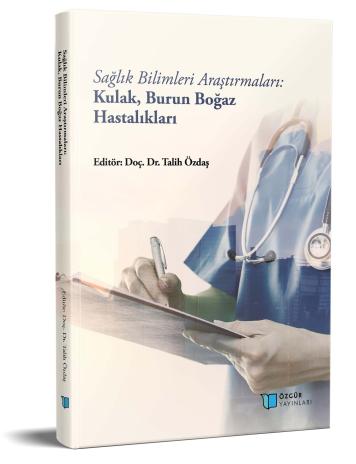
Baş-Boyun Cerrahisinde Antibiyoprofilaksi
Şu kitabın bölümü:
Özdaş,
T.
(ed.)
2023.
Sağlık Bilimleri Araştırmaları: Kulak, Burun & Boğaz Hastalıkları.
Özet
Cerrahi teknolojideki gelişmeler beraberinde cerrahi alan enfeksiyonu (CAE) gibi olumsuz ve istenmeyen sonuçları da getirmiştir. CAE hastane kaynaklı olarak ortaya çıkan infeksiyonların önde gelen nedenlerindendir. Bu tür infeksiyonlarda morbidite ve mortalite artışı olmakta, hastanede yatış süresi uzamakta, antibiyotik kullanımı artmaktadır. Yapılan kontrollü çalışmalar profilaktik antibiyotik kullanımı ile bu enfeksiyonların önemli boyutlarda azaltılabildiği göstermiştir. Ancak perioperatif antibiyotik kullanımının iyi bir cerrahi tekniğe, asepsi ve antisepsi uygulamalarına alternatif olmadığının bilincinde olmamız gerekir. Cerrahi profilaktik antibiyotik kullanımı; bakteriyel florayı azaltmak ve olabilecek kontaminasyonu normal konakçı mekanizmaların karşı koyabileceği düzeye getirmek için, antibiyotiklerin veya antimikrobiyal ajanların perioperatif dönemde enfeksiyon olmadan veya enfeksiyon gelişmesini önlemek amacıyla kullanılmasıdır. Antibiyotik profilaksisi, temiz-kontamine ve kontamine cerrahi girişimlerde rutin olarak önerilirken, temiz cerrahi girişimler için görüş farklılıkları bulunmaktadır. Kirli girişimlerde uygulanan profilaksi değil, genellikle tedavidir. Baş-boyun cerrahisinin elektif operasyonları genellikle temiz ya da temiz-kontaminedir. Paratiroidektomi, submandibüler gland eksizyonu, tonsillektomi, adenoidektomi, rinoplasti ve mandibula fraktürü onarımı gibi oral faringeal mukoza insizyonu yapılan temiz-kontamine işlemlerde profilaksi uygulanmalıdır. Radikal ya da bilateral boyun diseksiyonu ve myokutanöz flep ya da mikrovasküler serbest fleplerle rekonstrüksiyon operasyonları ise CAE açısından riskli prosedürlerdir. Antimikrobiyal profilaksi de sefazolin ya da sefuroksim ve metronidazol ya da tek başına ampisilin-sulbaktam verilebilir. Klindamisin β-laktam alerjisi olan olgularda Gram-negatif mikroorganizmalar için bir aminoglikozidle kombine edilerek verilebilir. Antibiyotik direncini en aza indirmek, maliyeti düşürmek ve hastayı CAE’den koruyabilmek için en uygun ve doğru profilaksiyi yapmak önem arz etmektedir. Cerrahi profilaksi, tüm cerrahlarca önemsenmeli ve profilaksi protokollerine uyulmalıdır.

